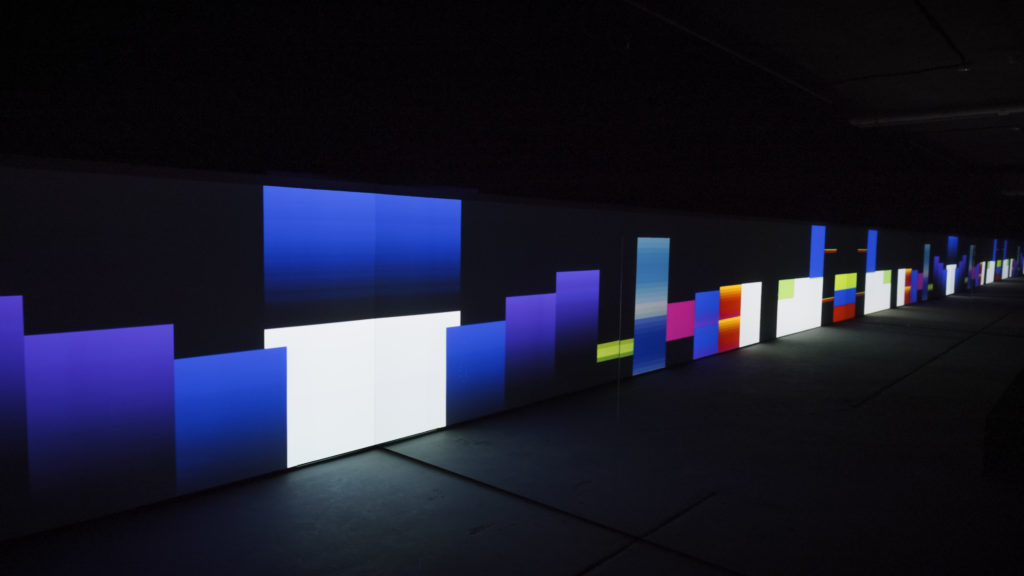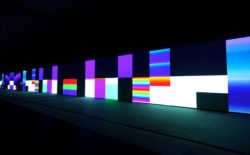How sonic frequencies and colour combine to create one of the German artist’s most immersive artworks.
Carsten Nicolai’s artistic output has taken many forms over the past three decades. After first studying landscape design for five years, Nicolai in 1996 founded Noton, a platform for conceptual and experimental projects in music, art and science. Since then he has explored music, film scores and sound design as Alva Noto, while developing large-scale audiovisual works that often treat sound as a sculptural material.
Nicolai’s 2014 piece unicolor – currently showing at LUX: New Wave of Contemporary Art, a new exhibition co-curated by Fact and SUUM Project – is one of the German artist’s most immersive works, unfolding against a long projection wall with two mirror walls on each side, creating the impression of extending into infinity. It operates with 16 modules that examine different forms of colour perception, utilising different visual effects to interfere with the viewer’s own individual perception of the work.

“When you read books about sound, most say our hearing ranges between 20 hertz and 20,000 hertz,” Nicolai tells Fact. “I don’t believe that. I think we can perceive a much higher frequency. We may not hear them, but they’re doing something to us. The name of the work already describes what it’s about. unicolor is a universal dictionary that tries to explain the phenomenon of colour, it’s not just purely about showing colour.”
In this film, Nicolai talks to Fact about the ideas behind unicolor and how the musical experimentation in Berlin that followed the fall of the wall in 1989 kickstarted an ongoing career of artistic innovation.


LUX: New Wave of Contemporary Art is open until December 18 at London’s 180 Studios, 180 The Strand. For opening times and tickets visit 180 The Strand’s website.
Watch next: LUX: Es Devlin – ‘BLUESKYWHITE’





























